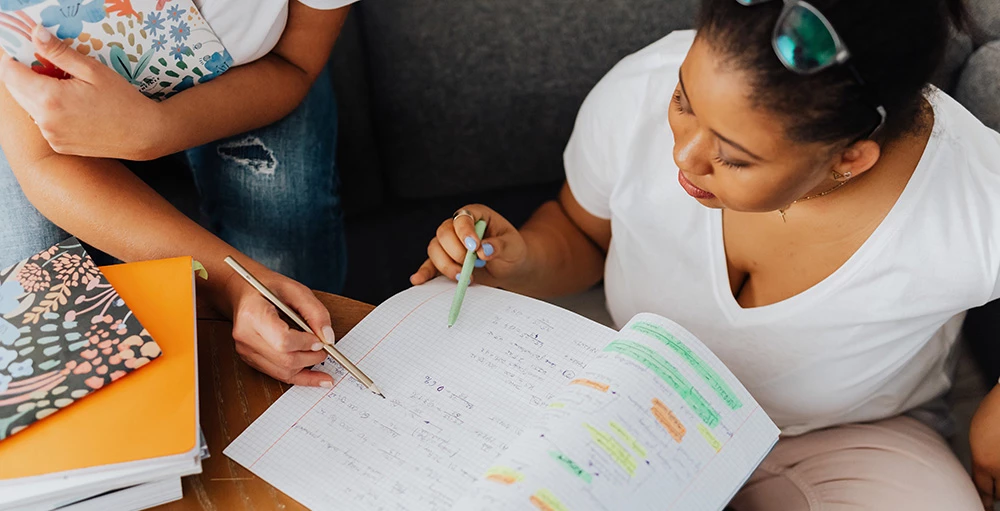We are in the middle of a student loan crisis, and this crisis is affecting your student population. Currently:
- Americans have $1.58 trillion1 in student loan debt
- The average amount borrowed each year has grown 35% from 1995 to 20172
- 2020 college grads borrowed an average $29,927
- 64% of 2020 graduates borrowed money for college3
- 42 million Americans have student loan debt4 – which is one in every eight adults
- Prior to the CARES Act, which halted student loan repayment, 11.1% of loans were delinquent5
The 2021 College Hopes and Worries Survey Report6 found that nearly all college applicants (98%) rely on student loans to some degree. Of those needing financial aid, 41% stated their biggest worry was the level of debt they’d need to take on to earn their degree.
Students Need Help
The Anxiety and Stress Report7 found that financial anxiety among students was directly correlated to the lack of financial literacy.
Unfortunately, those with low literacy often have poor financial habits – such as accruing high personal debt, using high-interest loans, defaulting on loans, and not planning for the future.
A lack of financial literacy, especially concerning how students loans work8, is most often seen in:
- First-generation students – 33%
- Women – 26%
- Minorities – 24%
That’s where institutions of higher education can help.
Offering a student financial wellness program can help students reduce their financial stress and help reduce the student loan debt among new college attendees. Here’s how.
#1 Understanding Loan Requirements
Many of those who borrow student loans have no idea how these loans work. Borrowers can’t answer simple questions like:
- How much interest will I pay over the life of the loan?
- How much will my monthly payments be?
- Is there a difference between federal loans and private loans?
One study found that when students were given information to understand their loans, their estimates of future payments were far more accurate. The same study suggested that this kind of understanding also leads to borrowing less9 overall.
Student financial wellness programs, such as iGrad, can help students answer their questions about student loans using interactive courses, tools, and multimedia.
Some programs even offer one-on-one counseling with a certified financial coach.
#2 Understanding Repayment Options
Many students do not understand how student loan repayment works. They have questions such as:
- When do I need to start paying my student loan?
- Do I have to pay even if I don’t have a job yet?
- Do I have to pay if I don’t graduate from college?
- Are there any loan repayment options to help me reduce the monthly cost of my loan?
A student financial wellness program can help students understand that they must begin paying their student loans six months after graduation or dropping out of school. This is true whether they have a job or not, and regardless of how much money they make.
A student financial wellness program can also help them find repayment plans based on income, learn about loan forgiveness programs, and steer them toward consolidation programs that make sense for their situation.
#3 Providing General Financial Literacy
Simply providing general financial literacy will have a huge impact on students and their ability to handle any student loan debt they take on.
Understanding how to budget and save are critical elements when repaying student loans.
A variety of studies show that providing general financial literacy to students helps them to:
- Reduce financial stress
- Reduce late payments
- Have better judgment when making financial decisions
Financial literacy skills help students take on appropriate levels of student loan debt and support them throughout their lives.
A strong foundation will help students make wise choices about future debt, savings, retirement, and homeownership after they leave your institution.
To learn more about how financial education programs like iGrad can help, here are 5 universities that are tackling the financial literacy crisis.
1 - https://www.newyorkfed.org/microeconomics/hhdc.html
2 -https://www.pgpf.org/blog/2021/10/student-debt-has-increased-sevenfold-over-the-last-couple-decades-heres-why
3 - https://www.usnews.com/education/best-colleges/paying-for-college/articles/see-how-student-loan-borrowing-has-risen-in-10-years
4 - https://studentaid.gov/data-center/student/portfolio
5 - https://www.newyorkfed.org/medialibrary/interactives/householdcredit/data/pdf/hhdc_2019q3.pdf
6 - https://www.princetonreview.com/college-rankings/college-hopes-worries
7 - https://gflec.org/wp-content/uploads/2021/04/Anxiety-and-Stress-Report-GFLEC-FINRA-FINAL.pdf?x85507
8 - https://www.researchgate.net/publication/338768079_Financial_literacy_and_student_debt
9 - https://www.tandfonline.com/doi/abs/10.1080/1351847X.2019.1711435








